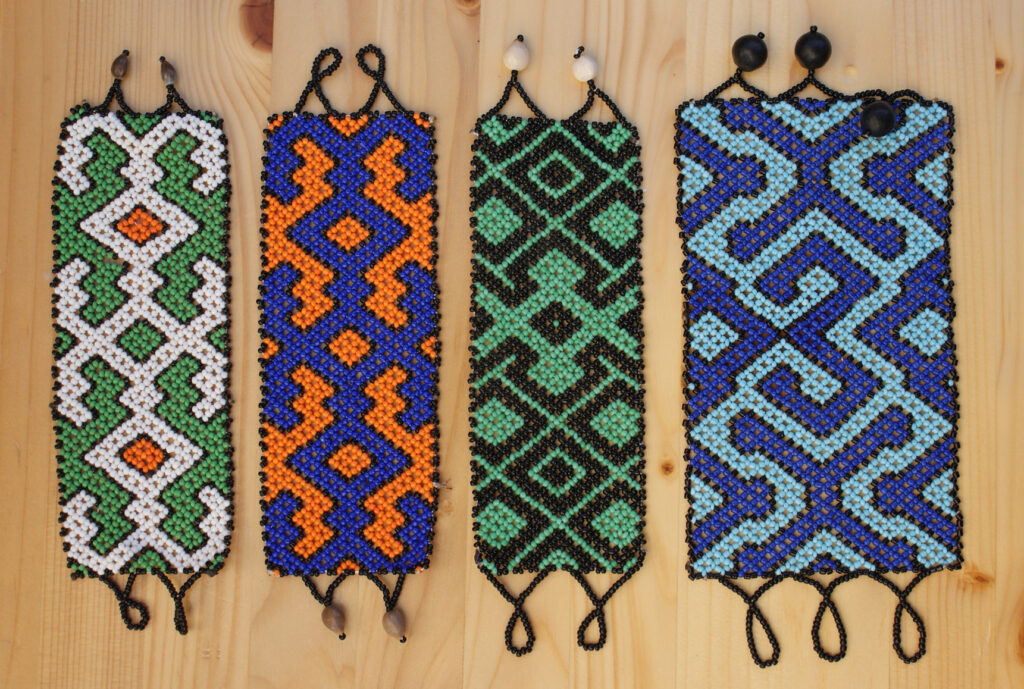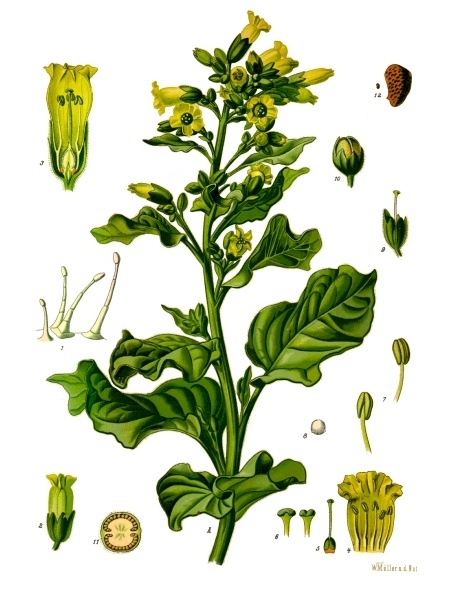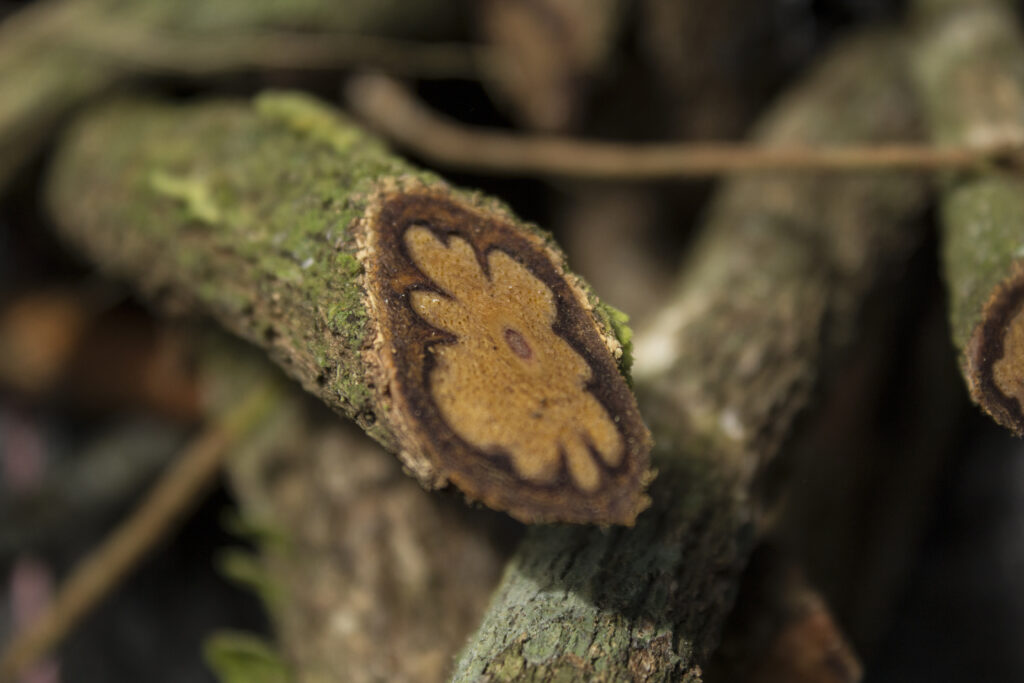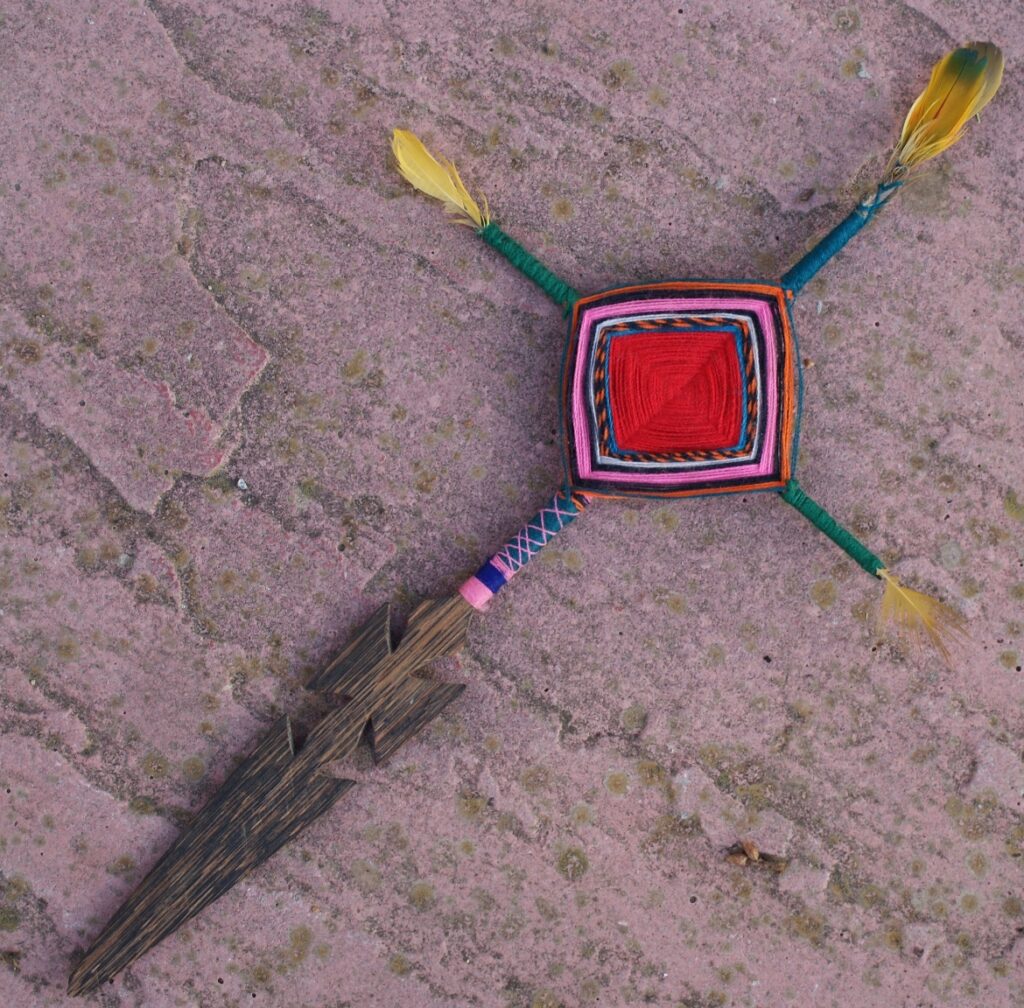- Wilma Mahua Campos, Shipibo Ayahuasquera - September 2, 2021

Interview and translation from Spanish by Samantha Black
Hello friends, I would like to share some experiences I have had during my many years in traditional medicine. My name is Wilma Mahua Campos, I am the daughter of an Elder healer named Don Benjamin Mahua Ochabano and Señora Celandine Fields Gordon. We are from the native community of Paoyhan on the Ucayali River in Peru. I am 44 years old, mother of 5 children and I am of the Shipibo ethnic group. We are part of the Shipibo-Conibo-Xetebo community and our land is the upper, middle, and lower Ucayali region in the Peruvian Amazon.

For my people, it is normal for certain ancestors, parents and relatives to pass traditional teachings to their children from an early age. I do this now with my children, and this is how my parents taught me traditional medicine practices from a very young age, with the help of my grandparents, uncles, and other relatives. Those of us who value our ancestral lineage from ancient times to the present are very careful to preserve and develop our culture.
Since I was a small child I took a lot of interest in studying Shipibo medicine with my parents, grandparents, uncles, and other relatives. I spent my childhood surrounded by Elder healers and took close notice of all that they did in their traditional works. I learned to prepare medicines with leaves and plants, and how to make salves, teas and poultices. From a young age I participated in the ayahuasca ceremonies together with the Elders in my family and saw how they treated the people who visited our ceremonies for healings. In this way, I became familiar with traditional medicine since I was a very little girl.
“From a young age I participated in the ayahuasca ceremonies together with the Elders in my family and saw how they treated the people who visited our ceremonies for healings. In this way, I became familiar with traditional medicine since I was a very little girl.”
Wilma Mahua Campos
When I was 12 years old I fell seriously ill, and together with my family I made the decision to use traditional plant medicine diets to heal me. I started the traditional plant diets for my health and also to continue learning traditional medicine. Through the plant diets I cultivated my relationship with the plants that my people use for healing. The energies of these plants began to form in my body and mind as I dieted as a young teenager.1 I was cured of my illness within a year and spent the next five years with a renewed desire to learn about traditional medicine; I started to make medicine and to participate in the ceremonies again. At this point I became a mother with my first son. The birth of my son humbled me, and I made a new commitment to stay very humble, and to make the right decisions about the course of my life. I spoke with my father and with my uncle who raised me, and they thought about this. After a few months, they held ceremonies for me, where they sang prayers for me to start with my life’s mission and to fulfill my purpose in life.

Those were wonderful ceremonies, and I finally understood that it was time to realize my dreams within the world of plants. As I sat with my family, I listened to each person share their own songs in their own voice. The melodies they sang to me were icaros (medicine songs) in my Shipibo dialect so I understood everything that was said about me, as my family handed over to me the healing power and energy of our central healing plant, the Noyarao.
With the energy of this sacred plant, the Noyarao, I saw many lights, flowers, and different visions, so I started the traditional plant medicine diets again. I did not know when to end my diets, so I spent a while more. As I continued dieting, my mind changed, and I became new. I had a vision of this change: I saw a white cape full of beautiful designs, and the cape was surrounded by my family, both the living and the ancestors. In my vision, my family was creating beautiful designs on the cape, designs that were meant for me to have and to use as a healer. Then I saw myself in the middle of the white cape, surrounded by the healing designs. I saw that in fulfilling my purpose, I am a design of my family, too.

Recordings are now available to watch here.
My first diet was Marrusa, the famous Incan plant which I was named after. My Shibibo name is Inkan Kena, which means “a hospital or healer who carries Incan plant medicine.” After Marrusa I dieted with Chiricsanango, Noyarao, Bombizana, and others.
There was another vision that I will never forget. I saw that my arms, hands, fingers, and feet grew into many green living, flowering leaves and branches that transformed my body. When I was not in ceremony I saw the same thing in my dreams, and once while I was inside one of these lucid dreams, I called to my parents to ask them what this vision meant. From inside my dream, they responded to me that this vision was part of my diets, and that the healing power of the plants was adapting in my body and blending with my spirit, to become one with my energy; they also told me that from my mother’s womb I was chosen to become a healer, by the plants. My father dieted with the plants for two years before I was born, to pray for a child to join the family lineage of healers.
“Plants become people in dreams and plant spirits become family to us who are healers. Plants are spirits that teach us how to heal the spiritual mind and the physical mind.”
Wilma Mahua Campos
Plants become people in dreams and plant spirits become family to us who are healers. Plants are spirits that teach us how to heal the spiritual mind and the physical mind. Plants teach us their songs which we call in our language icaros. Since I first dieted I now have almost 23 years of experience with natural medicine, and I am very happy to be the woman I am.
This is how my father and my uncle Pascual gave me the power and energy to continue my mission of traditional medicine as a legacy of their wisdom. I prepared myself to be a healer together with my parents, uncles, and grandparents, some of whom have since departed and find themselves in the glory of the Lord Our Father God. Thanks to the teachings of my family now I am a woman, a daughter, and a mother in the world of plants. Learning is not easy; it is very strict. This way of healing and becoming a traditional healer is not learned in one year. It takes time. It takes months, days, and years of going hungry, thirsty, and not talking to anyone. During these years I did not go out to the street and I did not walk with fast steps—I walked very slowly and carefully. I ate food without taste: no salt, no sugar, no spice, no oil but little by little I became accustomed to the diets and I mastered everything that was asked of me by the plant spirits.
Everything I did during that time strengthened me. I took that time to learn from my parents, while they were still present with me. I learned to help cure many kinds of sick people with plant diets, singing icaros, teaching and learning traditional medicine. I adapted to hold and express a lot with light when I became one with the energies of Noyarao and other curative plants. These are my experiences for many years and I continue to learn more and more. It is never enough—there is always a new challenge, always more to learn, and I have to keep discovering new things every day and continue to have new experiences.

Thirteen years ago I discovered the Noyarao tree, which we also call the “flying tree” (palo volador). I lived with and studied this tree not only in visions but in its physical form with the bright sunlight. Its leaves retain the sunlight so at night the tree glows, and very beautiful lights shine through its leaves and its branches. We are able to smell its flowers, touch the tree with reverence, and take its extract. We smoke its leaves with mapacho (Amazonian ceremonial tobacco, nicotania rusticana) and in this way we continue to learn from this tree. I continued to drink the tree in my traditional plant diets, until I could overcome my lower energies more, and come into contact with the angels of God, their prayers, their gifts, wisdom, intelligence, and above all the light of peace, love, and many other qualities.
“In our ancient minds our ancestors were very wise, they had no schools or hospitals to learn in but they knew how to do their activities correctly, and they developed their arts, their medicines, their families, and their communities. They knew that just as humans have rights in life, plants also have rights.”
Wilma Mahua Campos
Discover the Indigenous Reciprocity Initiative of the Americas
Both men and women are called on this path. In our ancient minds our ancestors were very wise, they had no schools or hospitals to learn in but they knew how to do their activities correctly, and they developed their arts, their medicines, their families, and their communities. They knew that just as humans have rights in life, plants also have rights.
Our ancestors took the natural medicine ayahuasca to diagnose their health problems. They used this natural medicine to cure their sick people and to discover the causes of physical, psychological, and spiritual diseases. That was the only way they had to diagnose and heal their sick. They knew how to treat the sick by giving them specific plants to drink, saunas with the steam of plants, vomitive purges, plasters and salves, all using the spirit and the body of the plants. In this way they cured. They knew the right time to give the medicine, and how to stay in a good relationship with the plants and the people. They saw the signs and drew information from the sun, the moon, and the other heavenly bodies. They were such geniuses that they did not ever doubt their skills. They used native plants to hunt animals and eat well, to catch fish, and for their work on the farm. They did not wear shoes or sandals; they walked with bare feet on the earth and made their own clothes from cotton-seed.

In the past, our culture was very different. For one thing, we used to have a big festival every year where people met, gathered, shared skills, and traded. This was called the Ani Xeati festival where many original peoples were gathered from different tribes, to celebrate. These festivals took months to prepare and lasted for over a week. The people would gather to hunt together, raise houses, and plant fields together. The women would take this time to weave new clothing such as Shipiba skirts (chitonti), Shipiba blouses (caton), ankle straps (jonxe) and Shipiba belts (chinexete). The women would prepare special clothes for the Ani Xeati party such as the mustarchilla or teote, which is a short cape used during the festival. The would also prepared a feast-time ceremonial spear painted with designs (wino), and ceremonial crowns woven with macaw or heron feathers (maiti).
There was always a fun encounter—a first haircut, an initiation for teenagers, a marriage, a new home, or canoe built. There were games held between women and men so that single people could meet one another. They would do ceremonies to help the people in the year to come, under the direction of the Apus (mountain shamans), the ayahuasqueros (river valley shamans), and the authorities of different peoples. The unique presentation of each group of people was celebrated and honored.

Now, in our present times, culture continues to live but is not honored. The larger society does not value Indigenous peoples such as the Shipibo-Conibo-Xetebo. We must recognize original peoples around the world, because they have ancient knowledge. There are people who make fun of Indigenous people and call them nothing more than peasants, without realizing that they have a whole and distinct culture; they live life in their own way. Indigenous people have many cultures with many different values, traditions, and ancient knowledge.
Culture adds value and meaning to the rural life of a peasant. They develop and supply markets, which are valued by consumers, such as medicinal plants and products of the countryside. I am Indigenous and know the value of my people. We are as human as anyone else in the world. Nature is full of life and we must learn to care for and value the healing qualities of the plants and trees—they give us the way to live, to exist, to heal, to eat, and to care for ourselves. There is much more to discover from Indigenous peasants. Let us pay attention, because we can learn many things from the peasant people.
1 Plant diets are an ancient Indigenous Amazonian practice and are administered by traditional healers. The dieter limits food intake and lives secluded in a natural setting while consuming concentrated doses of plant medicines. Many traditional healers diet in seclusion from two to five years to prepare for their role as a healer.

Please donate to the Psychedelic Renaissance Documentary
Take a minute to browse our stock:
Did you enjoy reading this article?
Please support Chacruna's work by donating to us. We are an independent organization and we offer free education and advocacy for psychedelic plant medicines. We are a team of dedicated volunteers!
Can you help Chacruna advance cultural understanding around these substances?

















